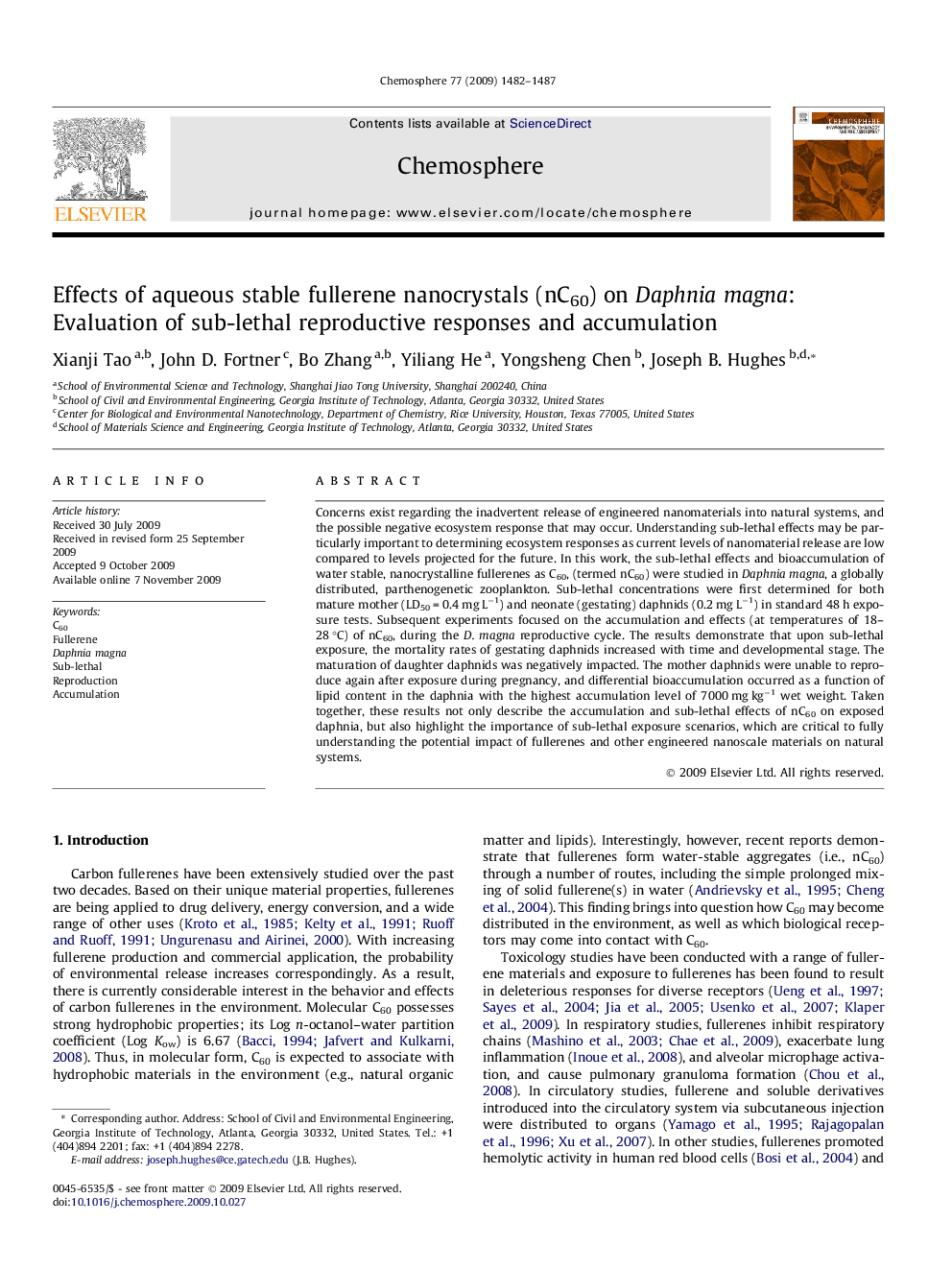| Article ID | Journal | Published Year | Pages | File Type |
|---|---|---|---|---|
| 4412601 | Chemosphere | 2009 | 6 Pages |
Concerns exist regarding the inadvertent release of engineered nanomaterials into natural systems, and the possible negative ecosystem response that may occur. Understanding sub-lethal effects may be particularly important to determining ecosystem responses as current levels of nanomaterial release are low compared to levels projected for the future. In this work, the sub-lethal effects and bioaccumulation of water stable, nanocrystalline fullerenes as C60, (termed nC60) were studied in Daphnia magna, a globally distributed, parthenogenetic zooplankton. Sub-lethal concentrations were first determined for both mature mother (LD50 = 0.4 mg L−1) and neonate (gestating) daphnids (0.2 mg L−1) in standard 48 h exposure tests. Subsequent experiments focused on the accumulation and effects (at temperatures of 18–28 °C) of nC60, during the D. magna reproductive cycle. The results demonstrate that upon sub-lethal exposure, the mortality rates of gestating daphnids increased with time and developmental stage. The maturation of daughter daphnids was negatively impacted. The mother daphnids were unable to reproduce again after exposure during pregnancy, and differential bioaccumulation occurred as a function of lipid content in the daphnia with the highest accumulation level of 7000 mg kg−1 wet weight. Taken together, these results not only describe the accumulation and sub-lethal effects of nC60 on exposed daphnia, but also highlight the importance of sub-lethal exposure scenarios, which are critical to fully understanding the potential impact of fullerenes and other engineered nanoscale materials on natural systems.
